Kakadu is the perfect perch for bird week
Birdwatchers swoop on Australia’s largest national park for one very special week of the year.
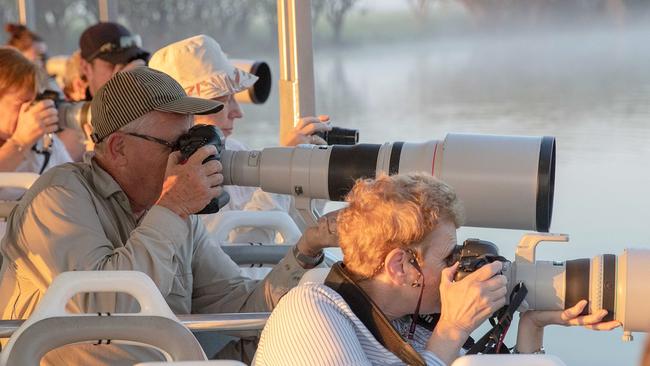
Dusk is drawing down on Ngurrungurrudjba or Yellow Water as hundreds of magpie geese head home to roost, forming faint squadrons against a pink sky. The birds’ distant cries drift down to our boat chugging the treacle-coloured waters of the South Alligator River floodplain. Beyond a screen of whispering pandanus, wild pigs plough the mud, brolgas pick their way gracefully through the marshes, a sinister rustling of bamboo forewarns the arrival of an enormous bull buffalo to drink.
The end of the long dry is near in Kakadu and the waters, birds and crocodiles have pulled back to this deep channel. There are so many crocodiles they might be stepping stones. Our small group is paying scant attention to the lurking reptiles however, as eyes and binoculars are firmly trained on the treetops. We are birders. Well, I’m a novice birder equipped with my late father-in-law’s old Nikon binoculars and an iPhone. My seasoned travelling companions are armed with camera lenses so immense they can probably spy distant galaxies.
The day has been long, and I’m in danger of drifting off, lulled by the movement of the boat, the honey scent of melaleuca flowers, even the weirdly relaxing sight of crocodiles drifting as innocuously as logs. We’ve been up since before dawn, before the larks, before the little corellas squawking and shrieking like banshees outside my bedroom window in the crocodile-shaped hotel at Jabiru.
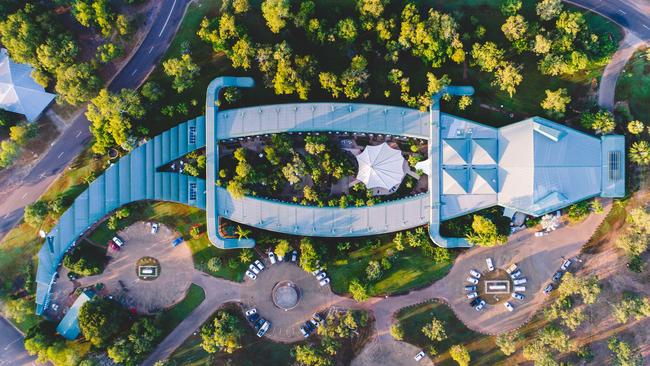
Our delightful leader, Luke Paterson, one of Australia’s leading specialist bird guides, has some specific quarry in mind. Old safari hands know Africa’s Big Five – elephant, rhino, buffalo, lion, leopard. For birders the Yellow Water has the Elusive Three: the little kingfisher, the black bittern and the great-billed heron.
A ripple of excitement passes over the boat (and a crocodile beneath) as eagle-eyed Paterson spots a little kingfisher. Captain Arleigh cuts the engines, the group huddles like paparazzi clicking and cooing in the direction of a teeny-weeny bird, the second smallest kingfisher in the world (it’s difficult to imagine a tinier iteration). As though aware of his fabulousness the vivid blue creature obligingly dives and plucks a very little shrimp from the still waters. Cries of delight are muted (we don’t want to frighten the little chap) but shutters click and whirr like crazy.
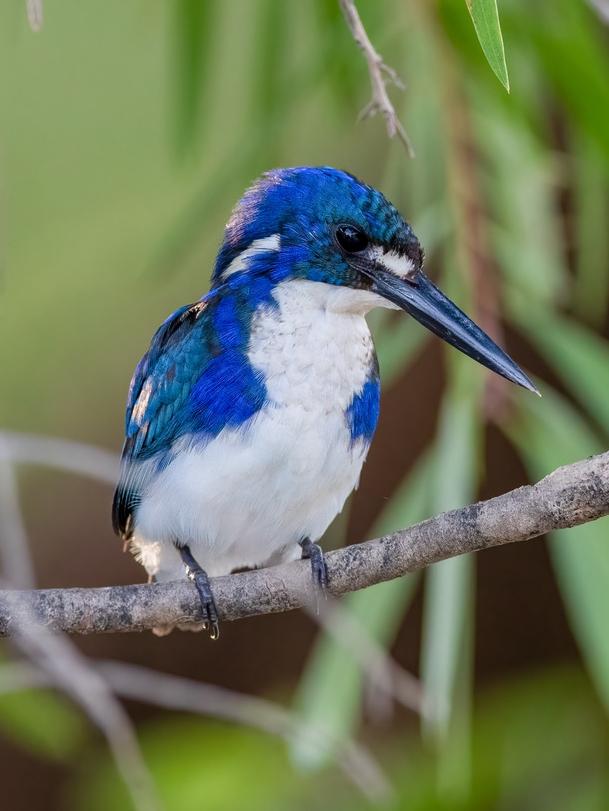
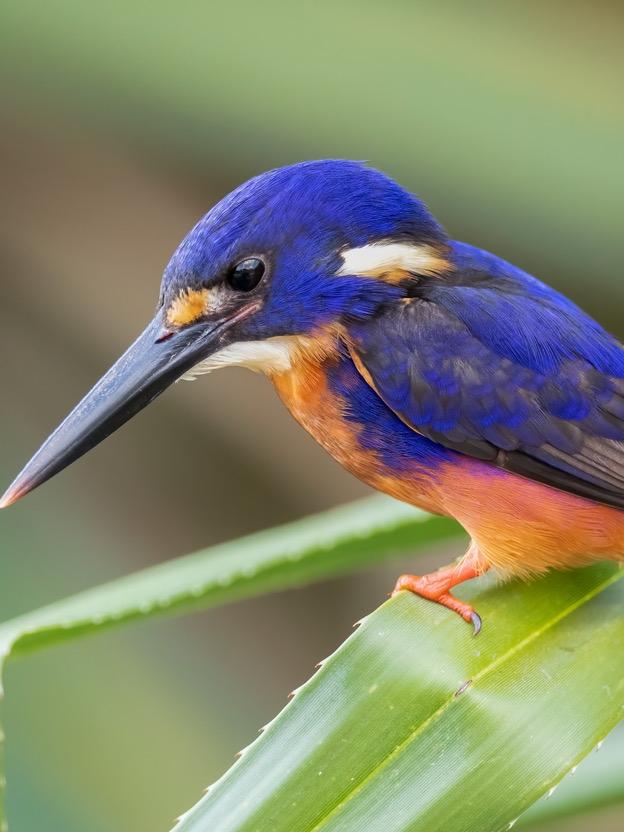
We are one for three – a good start – but the group wants more. This is Bird Week in Kakadu, home to almost 300 species (more than a third of Australia’s total) with some 130 found in this small area of the Alligator River alone. The region’s Ramsar-listed wetlands are a magnet for keen birders and specialist bird tours are growing in popularity.
There’s something compelling, almost meditative about spending hours on the hunt for an elusive, frequently tiny, quarry. In our sorely diminished natural world, birds provide a final opportunity to live among wild creatures, in our parks and backyards. But Kakadu is almost prehistoric in the splendour and abundance of its birdlife. (A little note here regarding nomenclature. It’s birders, not twitchers. According to Paterson, the latter is a derogatory term applied to those intent on simply ticking off species on a spreadsheet.)
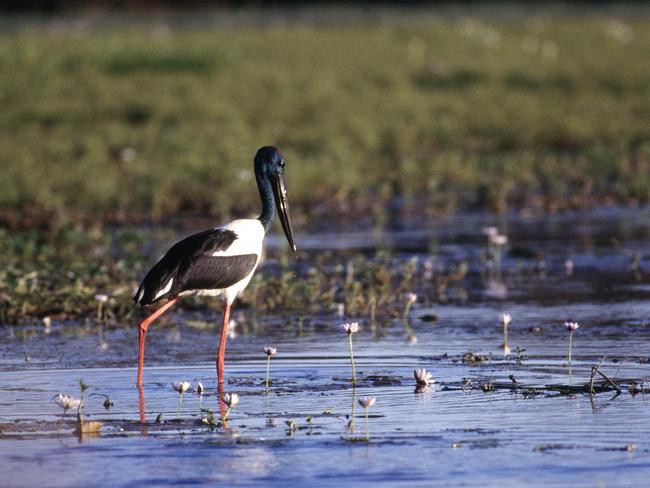
The boat enters “bird alley”, shaded by curtains of ghostly melaleucas. I’m sorry, but the temptation to tick off birds is overwhelming (and Paterson has provided a list). Black neck stork (jabiru). Tick. Plumed whistling ducks loitering among water lilies. Tick. A magisterial white-bellied sea eagle standing statue-still atop a paperbark. Big tick. I could go on. Royal spoonbill, a couple of radjah shelducks, a buff-sided robin with a head striped like a badger, an azure kingfisher, with rather gorgeous orange legs and black toenails. But no bittern, an especially shy and secretive bird.
Someone spies an immature nankeen night heron, a bird so beautiful I’m imagining it on a handpainted de Gournay wallpaper. Then, among the rustling bamboo, is the aptly named great-billed heron; it does have a stonking big beak. Stalking gracefully if somewhat hesitantly along the water’s edge, it reminds me of a gentleman in a grey suit (the actor Bill Nighy, always a snappy dresser, springs to mind).
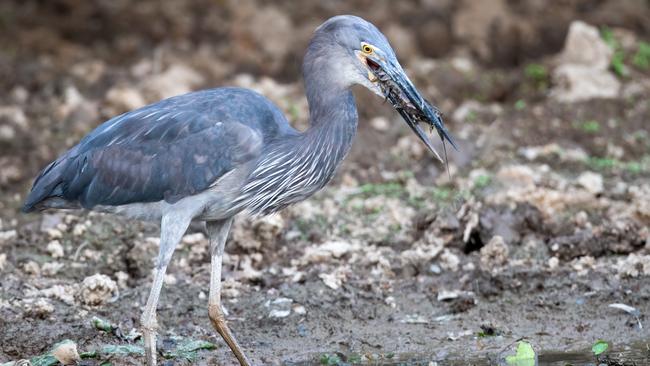
Five minutes later we spy it again, with a crayfish in its beak. But Bill is in trouble, a large croc is steaming towards it with a view to seafood entree, poultry main. Then the most extraordinary thing happens. Bill swallows the cray, ruffles and raises its feathers like hackles to resemble an angry feather duster and emits a low, threatening guttural growl. Momentarily flummoxed, the crocodile turns tail and leaps for a fish instead. What a bird.
Two of the “elusive three” spied and ticked, it’s back to the Mercure Kakadu Crocodile Hotel at Jabiru, to my room in the belly of the beast, where the airconditioning and a delicious dinner of wild-caught barramundi awaits intrepid birders. Dating from the late 1980s, the building has much of that era’s grandiosity, with an immense lobby. The shape is no gimmick; the crocodile is culturally significant to the Gagudju people, and the hotel effectively opened Kakadu National Park to international tourism. The decor may be a tad dated but my room is very comfortable and opens on to the pool. In the lobby (entered via the gaping mouth) a giant stuffed croc sits alongside tables of local art for sale.
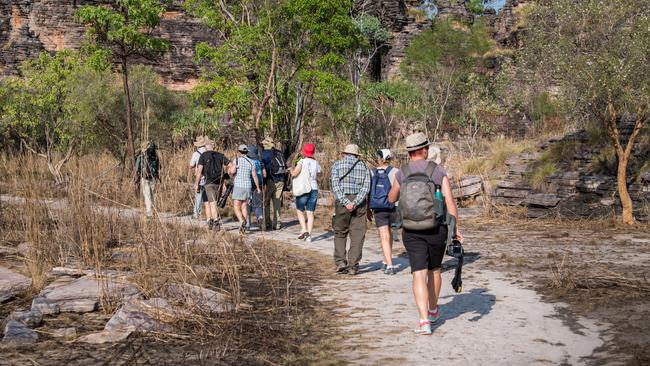
I should point one minor drawback to birding: very early starts. Paterson arrives at the hotel in his trusty van, daubed with a large Gouldian finch, at 5.30am. We’re off to Anbangbang Billabong where, with the help of Paterson’s powerful Swarovski eyeglass, I’m scoping vast flocks of birds gathered in the teeming, tepid waters: herons, spoonbills, ducks and pelicans. And egrets. Cattle egrets, intermediate egrets, little egrets and great egrets. Egrets, I’ve had a few, I tell Paterson, a lame joke banned in birding circles apparently.
Bardedjilidji stone country is a mysterious landscape where ancient sandstone stacks rise from golden spear grass like a lost city. Rock fig roots form spiderweb traceries against the stone. In a cool cave, rock art and lonely handprints are barely visible in the gloaming.
Kettles of kites (isn’t that a wonderful term) circle overhead as we traipse a sandy track on the lookout for two marquee birds that prefer this country. I win brownie points for spying the first chestnut-quilled rock pigeon using nothing more than my old low-fi binoculars, then Paterson rustles up a sandstone shrikethrush, one of those little brown birds that excite few but keen birders.
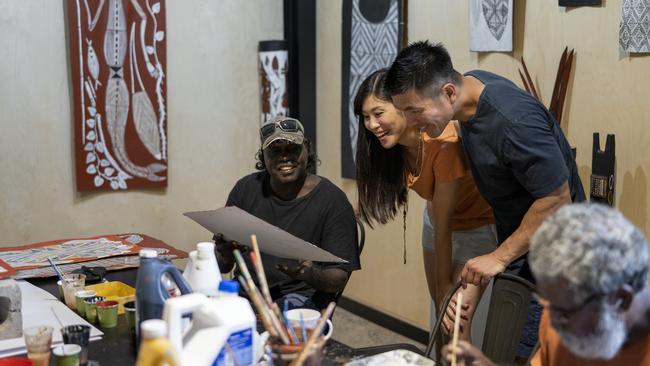
At Manngarre near Cahills Crossing on the East Alligator (Erre), where a plucky little car ploughs across the ford while a dozen huge crocs look on, the monsoon forest is tinder dry, leaves crackling underfoot. Overhead thousands of flying fox quiver and jiggle; the din is incredible, as is the pong. We’re looking for the rainbow pitta but it’s a no-show, despite Paterson’s best come-hither bird calls.
Just as we are about to pile back into the van someone spies the gorgeous creature by the road. Everywhere we’ve been, the indefatigable Paterson has delivered, but the black bittern remains elusive. His advice: “Never give up. Not until you go to bed.”
It’s time to depart, with a final stop at the Marrawuddi Arts & Culture centre in Jabiru. This wonderful contemporary gallery is the perfect place to buy local art and grab a coffee for the road. I’m bringing home a little painted wooden owl by artist Larry Cunningham. It’s snugly tucked into my suitcase for the drive back to Darwin through scrub and termite mounds, stopping for buffalo to cross the highway. We spy ponds of lotus, and see a last brolga and jabiru but no bittern.
A few days after returning home, Paterson emails me a photo of the elusive bird. He’s found it at last. A good birder never gives up.
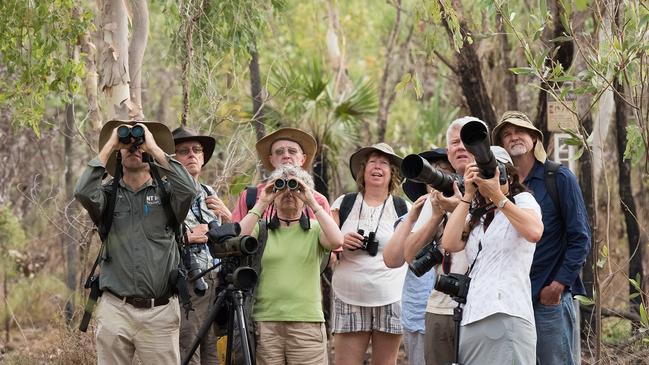
In the know
Luke Paterson’s Darwin-based NT Bird Specialists offers tours for experienced birders and novices alike. They range from one-day outings in Darwin and Kakadu (from $295 a person) to 17 days Darwin to Cairns ($13,799 a person). The popular 10-day Ultimate Top End Birding Adventure, visiting Darwin, Kakadu, Pine Creek, Katherine, Timber Creek and Kununurra, costs from $6299 a person.
Accommodation is limited in Kakadu. Cooinda Lodge, which is set in landscaped grounds with two swimming pools, is planning to unveil upscale glamping suites with private bathrooms next year.
The four-star Mercure Kakadu Crocodile Hotel is well located for exploring the national park. Large guestrooms with ready access to the pool and a good restaurant make this the ideal Kakadu oasis.
Christine McCabe was a guest of Tourism NT and Kakadu Tourism.

To join the conversation, please log in. Don't have an account? Register
Join the conversation, you are commenting as Logout